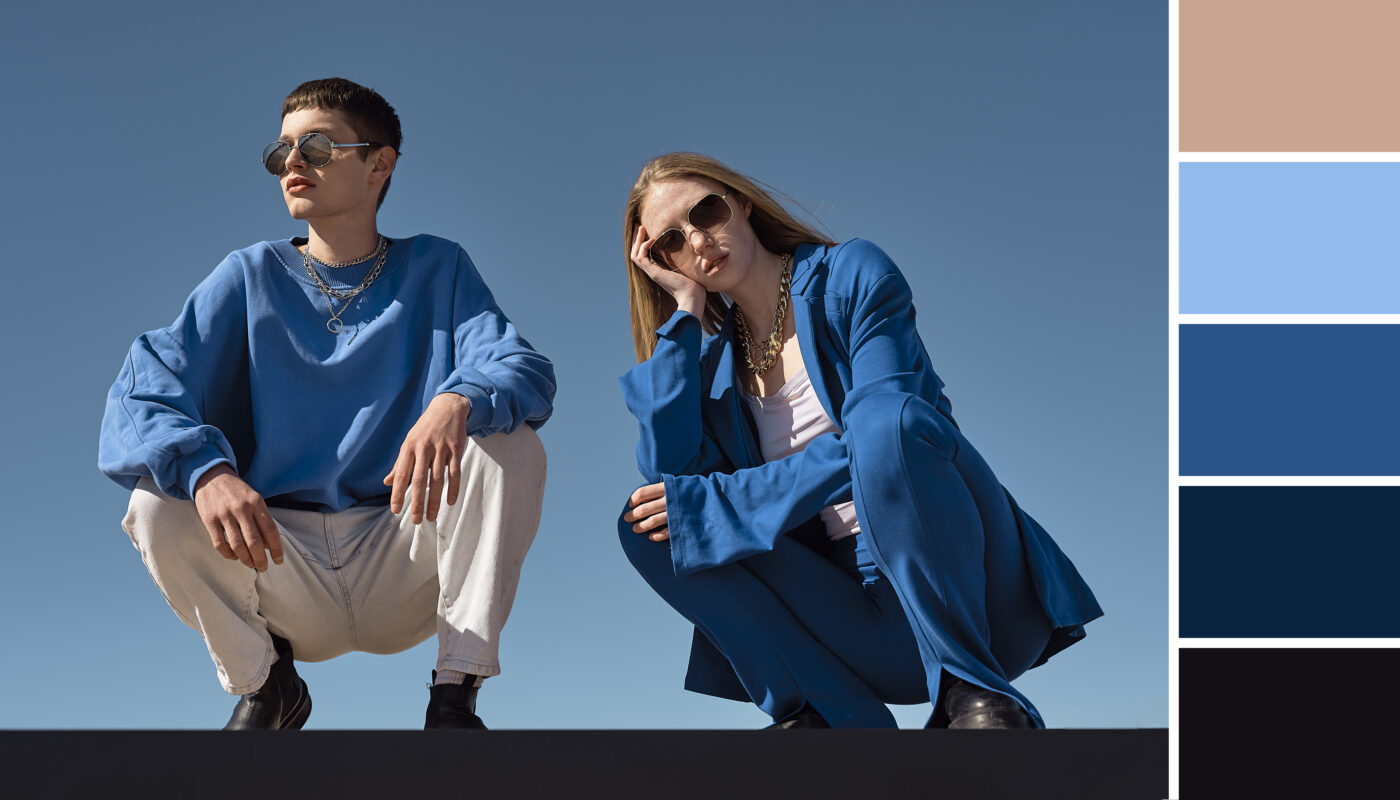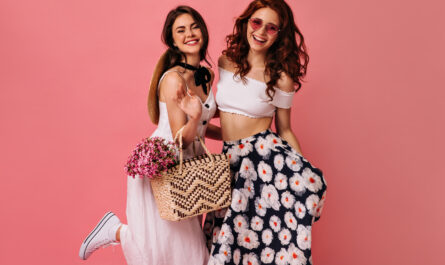Colors are more than just visual stimuli; they are emotional signals that can evoke confidence, warmth, and vitality. The right hues can brighten your complexion, highlight your eyes, and even create the illusion of balance in your figure. This concept, often referred to as “color confidence,” is about knowing which colors empower you and help you put your best foot forward every day. When you choose colors that resonate with your personality and natural features, you not only look better—you feel more confident, authentic, and empowered.
Understanding Your Unique Features
Before you dive into the world of color, it’s crucial to understand the elements that make up your unique appearance. Everyone has a combination of skin tone, hair color, eye color, and even body shape that plays a role in determining which colors will enhance their natural beauty.
- Skin Tone: Your skin tone isn’t just about being fair, medium, or dark—it’s about the underlying undertones, which can be cool, warm, or neutral. Recognizing your undertone is the first step in selecting the right palette.
- Hair Color: The color and texture of your hair can affect how light interacts with your face. From platinum blondes to deep brunettes and fiery redheads, each hue can be complemented by different clothing and makeup colors.
- Eye Color: The eyes are often the focal point of our face. Choosing colors that make your eyes stand out—whether they’re blue, green, brown, or hazel—can enhance your overall appearance.
- Body Proportions: While body shape isn’t directly linked to color theory, using color strategically through contrast and balance can help accentuate your best features and create a harmonious silhouette.
The Fundamentals of Color Theory
A basic understanding of color theory can revolutionize the way you approach your wardrobe and makeup. Color theory is not just for artists; it provides a framework to understand how different hues interact and the psychological effects they may have on the viewer.
Warm vs. Cool Undertones
- Warm Undertones: If your skin has hints of gold, peach, or yellow, you likely have a warm undertone. Warm undertones tend to glow in earthy colors such as rich browns, vibrant oranges, deep reds, and warm yellows. These hues can create a harmonious look that enhances the natural warmth of your complexion.
- Cool Undertones: Those with cool undertones often have hints of pink, red, or blue in their skin. Cool undertones work beautifully with jewel tones like sapphire blue, emerald green, and deep purples, as well as crisp colors like icy blue and true white. These colors can create a striking contrast that brings your features to life.
- Neutral Undertones: Neutral undertones are a blend of both warm and cool hues. People with neutral undertones have the flexibility to wear a wider range of colors. However, they must be mindful of the intensity and saturation of a color to avoid washing out their natural glow.
The Color Wheel and Complementary Colors
The color wheel is an indispensable tool in understanding how colors relate to one another. Colors that are opposite each other on the wheel—known as complementary colors—can create a vibrant look when paired together. For example, pairing a cool blue with a warm orange can result in an eye-catching contrast that highlights your best features. Conversely, analogous colors (those next to each other on the wheel) offer a more harmonious, subtle look that can be perfect for everyday wear.
Determining Your Undertone: Simple Tests
Knowing your undertone is essential to selecting colors that enhance your features. There are several simple methods to help determine whether you have a warm, cool, or neutral undertone:
- The Vein Test: Look at the veins on the inside of your wrist. If they appear bluish, you likely have cool undertones. If they seem greenish, you are probably warm-toned. If you can’t tell, you might have neutral undertones.
- Jewelry Test: Think about whether you look better in gold or silver jewelry. Gold tends to complement warm undertones, while silver is more flattering for cool undertones.
- White Fabric Test: Hold a piece of white fabric next to your face in natural light. If your skin appears more radiant against pure white, you might have cool undertones; if it looks more vibrant with off-white or cream, you likely have warm undertones.
These tests are a starting point for understanding your personal palette. Experimenting with these can build a foundation for your color confidence, helping you make informed decisions when shopping for clothes or makeup.
Colors That Enhance Your Features
Once you have identified your undertone, you can start exploring which colors will accentuate your best features. Here’s a breakdown of suggestions based on common undertone categories:
For Warm Undertones
- Rich Earth Tones: Embrace colors like terracotta, olive green, and mustard yellow. These hues echo the natural warmth of your skin and create a harmonious look.
- Bold Reds and Oranges: These colors can be particularly striking on warm undertones, enhancing the natural vibrancy of your complexion.
- Neutral Foundations: Warm neutrals like camel, beige, and cream serve as perfect base colors that allow brighter accents to stand out without overwhelming your natural glow.
For Cool Undertones
- Jewel Tones: Sapphire, emerald, amethyst, and ruby are ideal choices for cool undertones. These deep, rich colors create a sophisticated contrast with your natural skin tone.
- Pastel Hues: Soft pastel shades like lavender, mint, and baby blue work well on cool undertones, providing a gentle, complementary contrast.
- Crisp Neutrals: Opt for cool neutrals such as pure white, charcoal gray, and navy blue to form a balanced, elegant foundation for your outfit.
For Neutral Undertones
- Balanced Palettes: People with neutral undertones have the advantage of versatility. You can choose from both warm and cool colors, though it’s important to avoid overly saturated hues that might overshadow your natural features.
- Soft and Muted Shades: Colors like dusty rose, soft taupe, and muted green can enhance your natural beauty without overwhelming your overall look.
- Bold Accents: With a neutral undertone, you have the freedom to experiment with bold accent colors—like a striking red accessory or a pop of bright blue—while still maintaining a balanced appearance.
The Role of Color Psychology
Color psychology studies how different colors affect mood, behavior, and perception. It’s a powerful tool that can elevate your style by not only enhancing your physical features but also influencing how you feel and how others perceive you.
- Red: Often associated with passion, energy, and power, red is a dynamic color that can make a strong statement. Incorporating red into your wardrobe—whether through a bold dress, a striking lip color, or even red accessories—can evoke confidence and a sense of authority.
- Blue: Blue is known for its calming and trustworthy qualities. It works especially well for professional settings, as it conveys reliability and a sense of calm. From navy suits to soft blue blouses, blue can be both soothing and stylish.
- Green: Green represents balance, harmony, and growth. It is versatile enough to be both refreshing and grounding. Experimenting with green, whether through deep forest hues or softer mint tones, can help enhance your natural look while evoking feelings of rejuvenation.
- Yellow: Often seen as the color of optimism and happiness, yellow can brighten your complexion and bring warmth to your overall appearance. Use yellow as an accent or statement piece to inject energy into your look.
Understanding the emotional resonance of these colors can help you select shades that not only enhance your physical features but also boost your mood and confidence. This deeper level of self-expression is what transforms everyday dressing into a powerful personal statement.
Practical Tips for Integrating Color into Your Wardrobe
Building a wardrobe that reflects your color confidence doesn’t require a complete overhaul of your closet. Instead, consider these practical tips to incorporate the right colors into your daily attire:
Start with Neutrals and Add Accent Colors
Neutral colors are the backbone of any versatile wardrobe. They provide a canvas upon which you can build bolder looks. Once you’ve established a neutral base—such as black, white, gray, or beige—experiment with accent pieces that add pops of color. This might include a vibrant scarf, a statement bag, or a pair of bright shoes. Accents allow you to test how different colors make you feel without committing to a full head-to-toe look.
Experiment with Layering
Layering is an art form that lets you mix different textures and shades in one outfit. Use layers to incorporate multiple hues that complement your undertone. For example, a cool-toned sweater paired with a neutral jacket and a vibrant accessory can create depth and interest, ensuring that your features are highlighted rather than overshadowed.
Balance Bold Colors with Subtle Elements
If you love making a statement with bold colors, balance them with more subdued elements. A brightly colored blazer might be paired with a simple white shirt and neutral trousers. This contrast helps draw attention to your best features while maintaining a polished and cohesive look.
Use Makeup as Your Color Palette
Your makeup routine offers another platform to experiment with colors that enhance your features. Choose foundation shades that match your skin’s undertone and explore different lipstick colors, eyeshadows, and blushes that either complement or contrast with your natural coloring. For instance, if you have cool undertones, try using a berry or plum lipstick to add a pop of color, or select cool-toned eyeshadows that draw attention to your eyes.
Accessorizing with Color
Accessories provide a low-risk way to experiment with color. Hats, belts, jewelry, and even sunglasses can all be chosen in shades that either accentuate your features or add an unexpected twist to your look. Consider mixing metallics with vibrant fabrics—for example, pairing a gold necklace with a deep blue outfit—to create a dynamic yet balanced ensemble.
Consider Patterns and Textures
While solid colors often provide the cleanest look, patterns and textures can add depth and interest to your outfit. When selecting patterned clothing, pay attention to the dominant colors in the design. A floral print might have subtle hints of color that work well with your undertone, while bold geometric patterns can serve as a focal point for your outfit. Balance is key; if your pattern is busy, keep the rest of your look simple to ensure your features remain the highlight.
Building Confidence Through Color
True color confidence goes beyond knowing which shades suit your skin—it’s about embracing your individuality. When you feel confident in the colors you wear, that confidence radiates outward, influencing how others perceive you. Here are some strategies to cultivate color confidence:
- Educate Yourself: Take time to learn the basics of color theory and experiment with different palettes. Over time, you’ll develop an instinct for what works best with your natural features.
- Experiment Boldly: Don’t be afraid to try something new. Fashion is as much about discovery as it is about routine. Whether it’s testing a new lipstick shade or buying a daring piece of clothing, experimentation can lead to surprising, confidence-boosting results.
- Invest in Quality Pieces: When it comes to wardrobe staples, quality matters. Investing in timeless pieces in colors that flatter your features will give you a reliable foundation to build on, ensuring that every outfit feels intentional and authentic.
- Listen to Your Instincts: Fashion is personal. While trends come and go, your instincts about what makes you feel good are timeless. If a particular color or combination feels right to you, trust your gut and wear it with pride.
Bringing It All Together: Your Personal Color Blueprint
To truly harness color confidence, it’s essential to view your style as a personal blueprint. This blueprint should be a living document that evolves with you as you experiment and refine your tastes. Start by:
- Identifying Your Undertone: Use simple tests such as examining your veins, trying on different jewelry, or holding various fabric shades near your face.
- Curating a Base Wardrobe: Build your collection around neutral colors that serve as a flexible foundation.
- Selecting Accent Colors: Choose vibrant hues that complement your undertone, experimenting with both bold statements and subtle touches.
- Incorporating Accessories: Use small items to add bursts of color, ensuring that your look remains balanced and refined.
- Reviewing and Evolving: Fashion is dynamic. Revisit your color choices periodically to see how they align with your evolving style and confidence.
By treating your wardrobe as a canvas and your personal features as the masterpiece, you create an environment where every color choice is an opportunity to express yourself. Over time, this mindful approach not only refines your aesthetic but also deepens your self-awareness and confidence.
Final Thoughts: Embrace the Power of Color
The journey to color confidence is deeply personal. It requires understanding your unique features, experimenting with different hues, and ultimately, trusting your instincts. When you choose colors that enhance your features, you’re not just curating a stylish wardrobe—you’re cultivating a sense of identity and self-assurance that can empower you in every facet of life.
Embrace the colors that resonate with you, and don’t be afraid to take risks. Whether you opt for bold statements or understated elegance, remember that the true essence of style lies in authenticity. With the knowledge of color theory, the insights of color psychology, and a deep understanding of your unique attributes, you have everything you need to build a confident, vibrant look that truly reflects who you are.
As you continue to experiment and refine your palette, let each choice serve as a reminder of your individuality and the power of self-expression. The perfect color isn’t just a shade—it’s a reflection of your inner vibrancy, a symbol of your confidence, and a celebration of everything that makes you uniquely beautiful.
Remember, fashion and color are not about following trends blindly; they are about finding what makes you feel alive and empowered. So, next time you stand before your closet or apply your makeup, take a moment to appreciate the science and art behind your choices. With every thoughtfully chosen hue, you’re not just enhancing your features—you’re making a statement that is uniquely yours.
In the end, color confidence is an ongoing journey of exploration, creativity, and self-love. By embracing your natural undertones, experimenting with vibrant accents, and curating a wardrobe that speaks to your soul, you set the stage for a lifetime of style and confidence. Wear your colors boldly, and let the world see the radiant, empowered individual you truly are.



